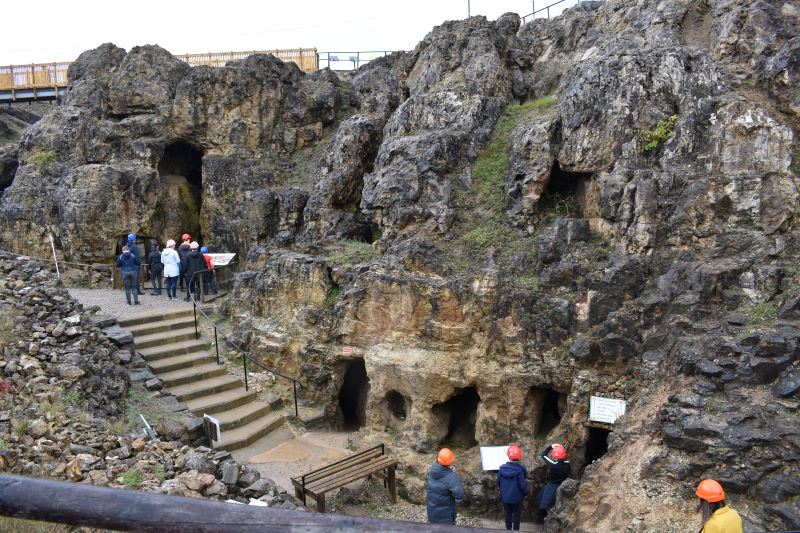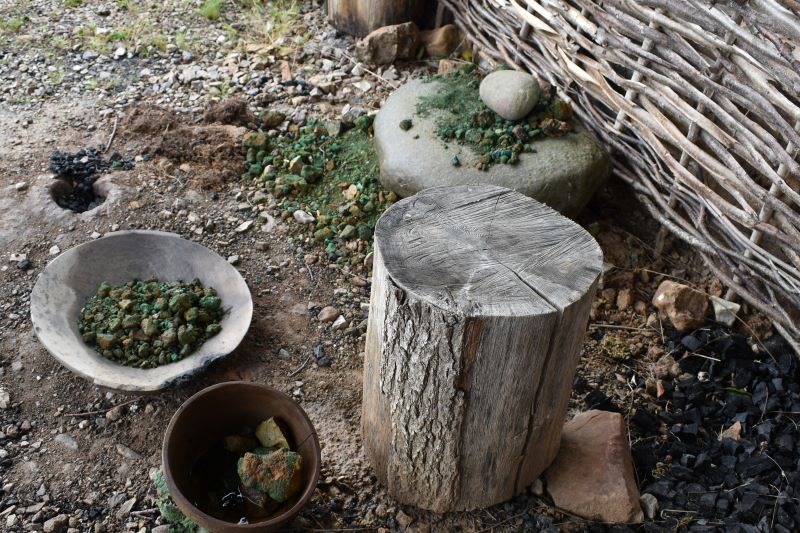4000 yeas ago, inhabitants in what is Northern Wales today realized the green stone found in the rocks here could be used in the production of Bronze – the new age metal taking the world by storm!
For nearly a thousand years, miners extracted the ore from the site. They did not have the technology to mine below the water table, so depth limitations and the emergence of iron as the next greatest metal led to the decline of the mine.
But the mine was not completely forgotten. During the industrial revolution of the 19th century, the invention of machines able to pump out water meant mining could resume during Victorian times. Eventually, the town became more of a seaside resort and the mine was covered with dirt excavated from other construction projects.
In 1987, land surveys began in preparation for a parking lot and the Victorian mine was used to survey the depths. Artefacts uncovered led to the realization that the mine was much older than previously thought and a gold mine, er, copper mine, for historians, geologists, archaeologists and more burst onto the forefront of research.
Getting There
Location: Llandudno, Wales along the northern coast
Transport: The nearest major airports would be Liverpool (65 miles) or Manchester (75 miles). There is a train station in Llandudno, so you can take a taxi from there or else it is very well sign-posted for arrival by car.
Highlights
Must-See:
- Self-Guided Tour (45-60 min)
- Visitor's Center & Tearoom
- Smelting Shelter to see how ore becomes bronze
Rise of the Bronze Age
The Bronze Age likely began in the Balkans – early bronze items found in Bulgaria & Serbia from around 4000 BC. The technology spread from there to China, Mesopotamia and Eqypt and continued to Europe, Britain & Ireland by about 2100 BC.
Prior to this, we were using stone tools (during the Stone Age) for thousands of years and eventually metals like copper, tin, gold and silver which could be shaped but were too soft for most applications. The discovery of metallurgy techniques had a transformational impact on the development of society and we’ve never gone back!
Ancient miners used granite stones found on the nearby beach to remove and crush up the limestone and extract the green malachite. Malachite is a copper carbonate hydroxide mineral which can be polished for jewelry or ground up and used as a pigment.
Heating malachite with charcoal (pure carbon) results in the release of carbon dioxide and high purity copper. The process of heating ore to extract metal is called “smelting”.
The American Chemical Society published an experiment for high school chemistry classes to smelt your own copper using common household items. I love when my degrees in chemistry and history join forces!
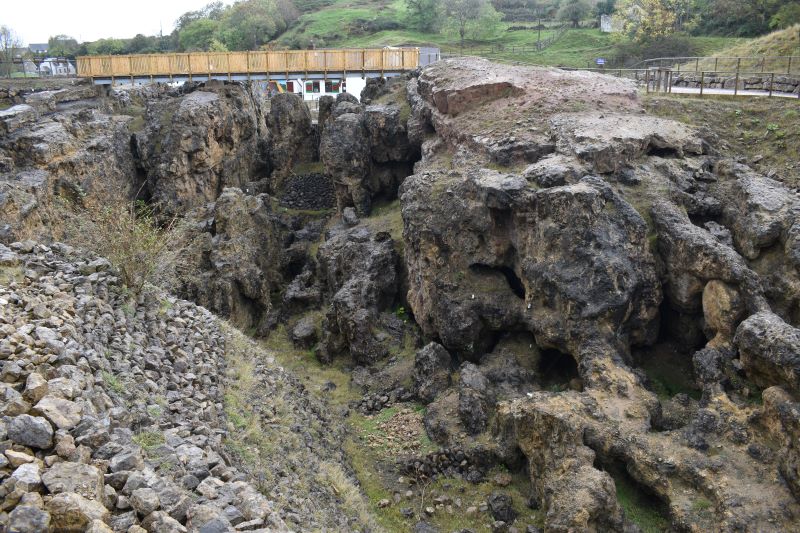
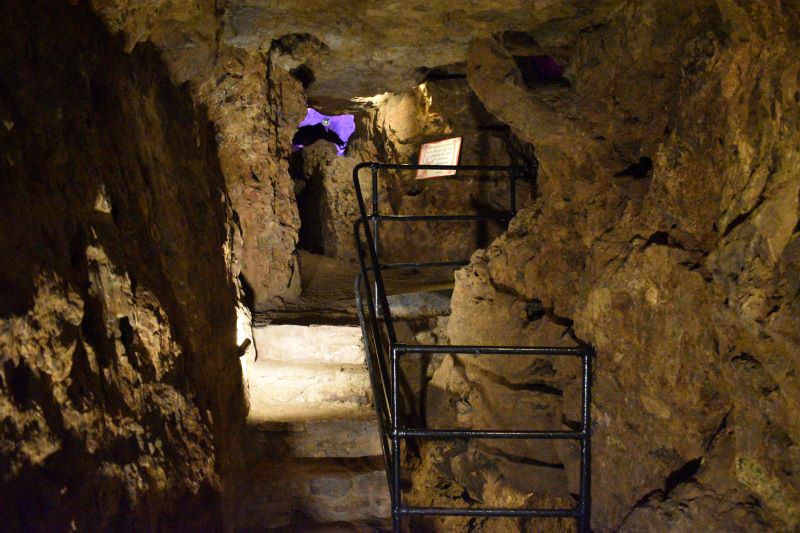
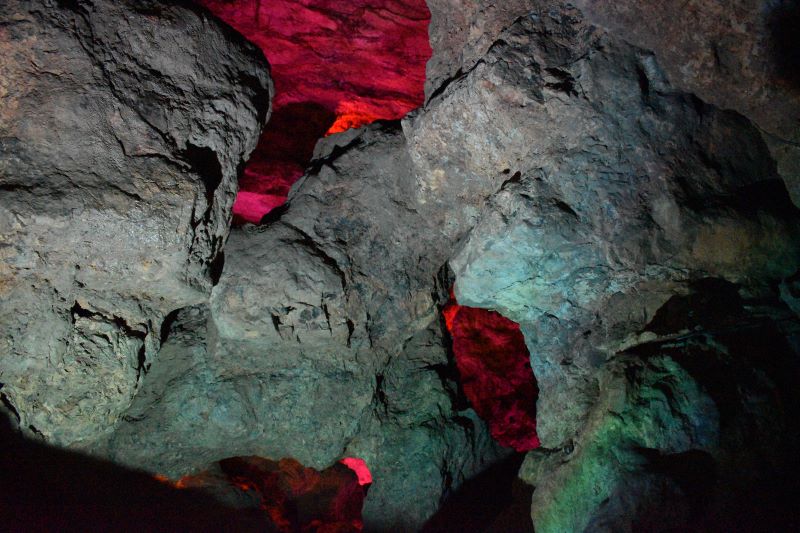
Prehistoric Mining Techniques
More than 3,000 prehistoric tools from the mine have been uncovered since it was found in 1987. I imagine it must have been incredibly tedious to mine by hand using stones or animal bones to scrape and grind up the ore.
One technique used to break up the rock faster was a process called “firesetting”. Miners knew fire could weaken the rock, so they would literally set fires in the tunnels to make the rock crack for easier removal.
Charred evidence of firesetting has been found in the mine and carbon dating puts it in the preshistoric period.
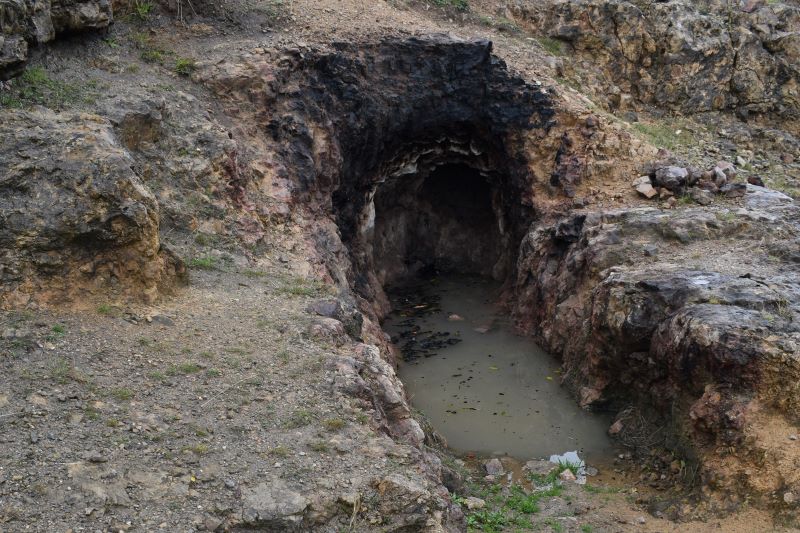
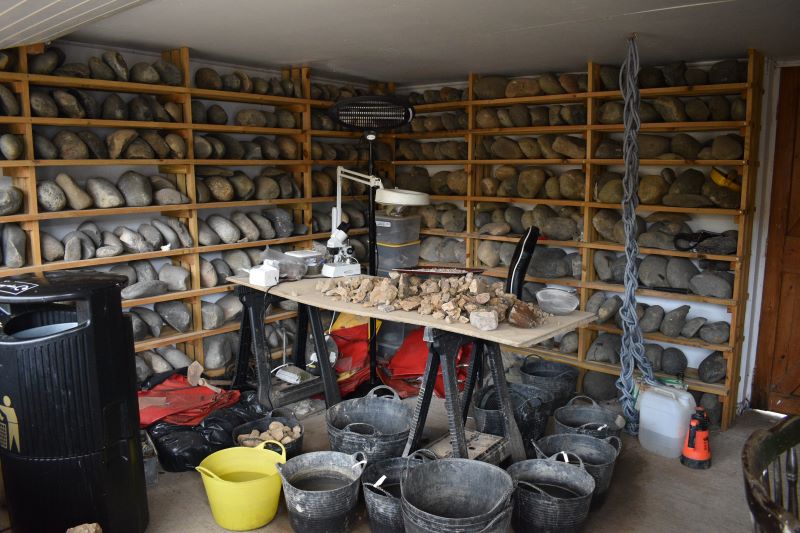
Touring the Great Orme Mine
A really nice Visitor’s Center gives you some additional background on the Bronze Age and what the region was like 4000 years ago. Originally, Orme was an open-pit mine, meaning people removed what they could see on the surface. Eventually, they had to follow the ore underground and tunneling began.
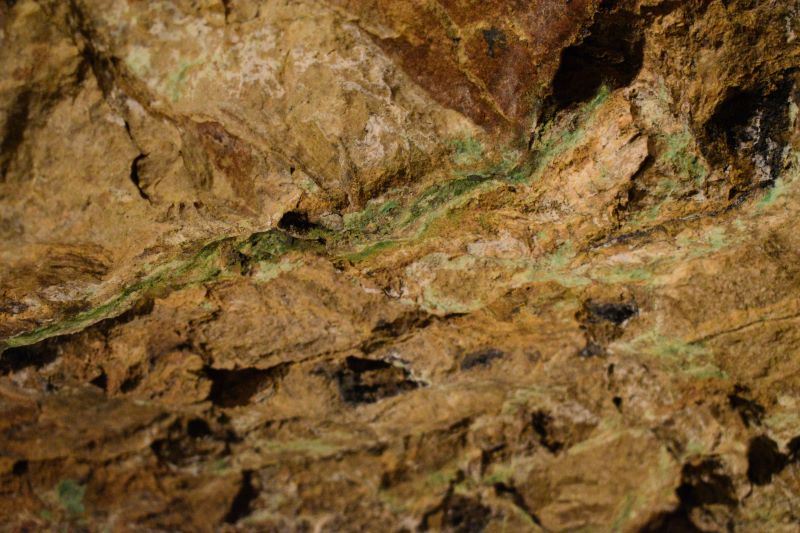
Since its discovery in 1987, more than 5 miles of underground tunnels have been uncovered. This makes Orme the largest prehistoric mine known in the world!
Manny tunnels are incredibly narrow. It is believed that children as small as 5 or 6 would have been involved in mining these areas.
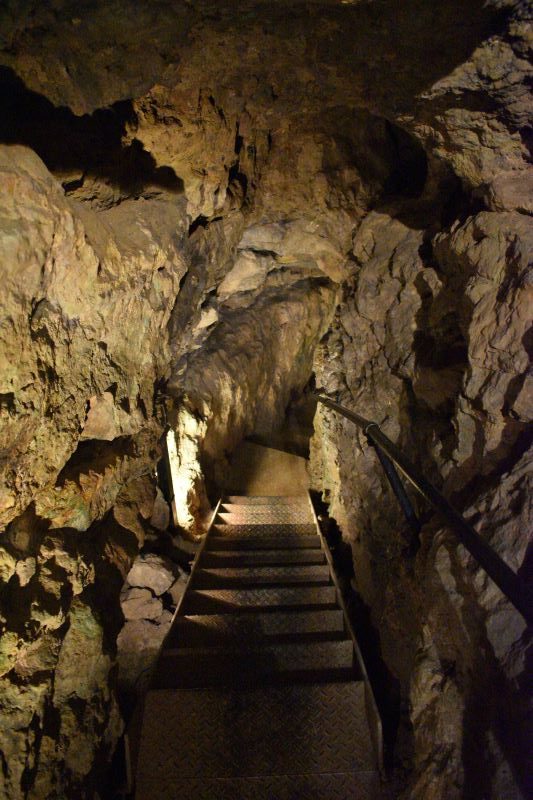
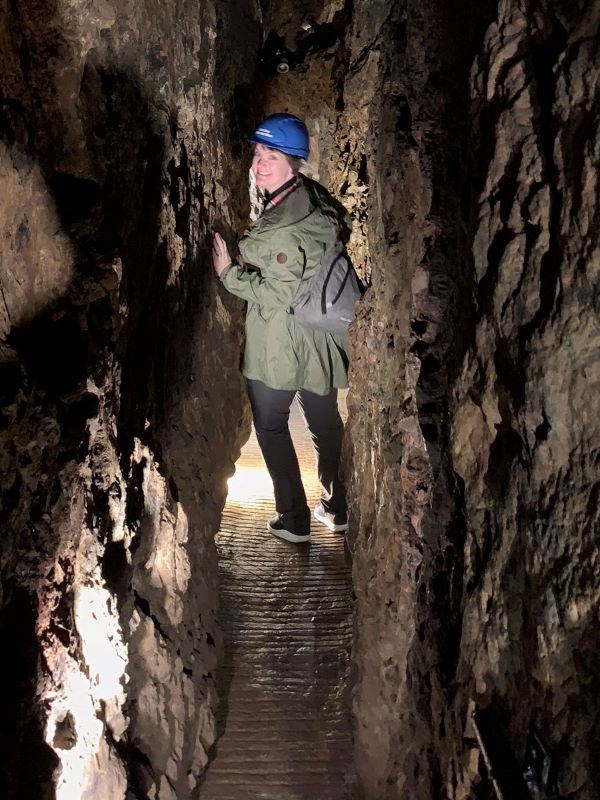
The self-guided tour takes you through one of the more manageable pathways, but it’s probably not great for someone who is claustrophobic. It’s a one-way tour, so at least you don’t have to worry about squeezing past other people – just rocks!
I would estimate you end up probably 30-40 feet underground, so the temperature is constantly cool year-round. Bring a jacket and wear adequate footwear – it’s fairly damp and slippery in places.
Definitely keep your hard hat on. I’m 5′ 11″ and my husband is over 6 feet tall and we bumped our heads a few times! You do have to navigate sloping tunnels and some stairs: about 50 when you enter and leave.
Victorian Era Mining
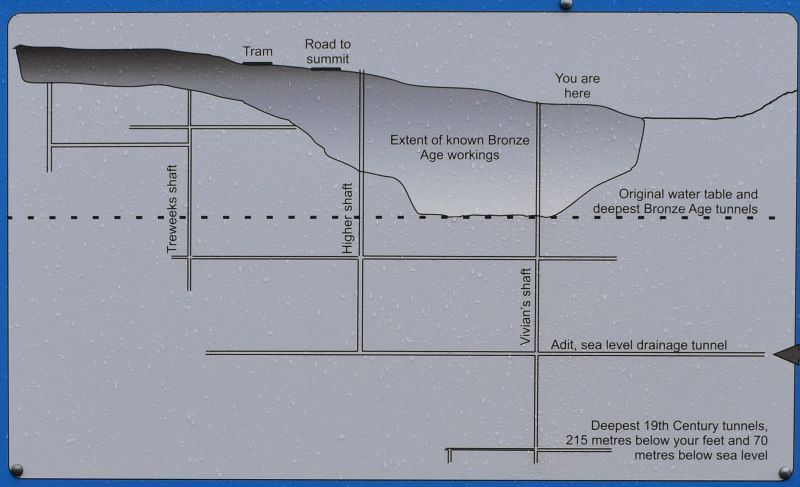
With the invention of mechanical pumps in the 1820’s & 30’s, mining at Orme could resume. Miners could now dig below the water table, pumping out the water as they went.
Mining only last until the 1850’s, when cheaper copper from abroad, difficulties keeping water out at these depths and higher wages working at seaside resorts in town ultimately led to the closure of the mine.
The self-guided tour will take you past the deepest, Vivian’s shaft. Nearly 500 feet straight down, the shaft is covered with a protective grate to prevent accidents.
Research Continues
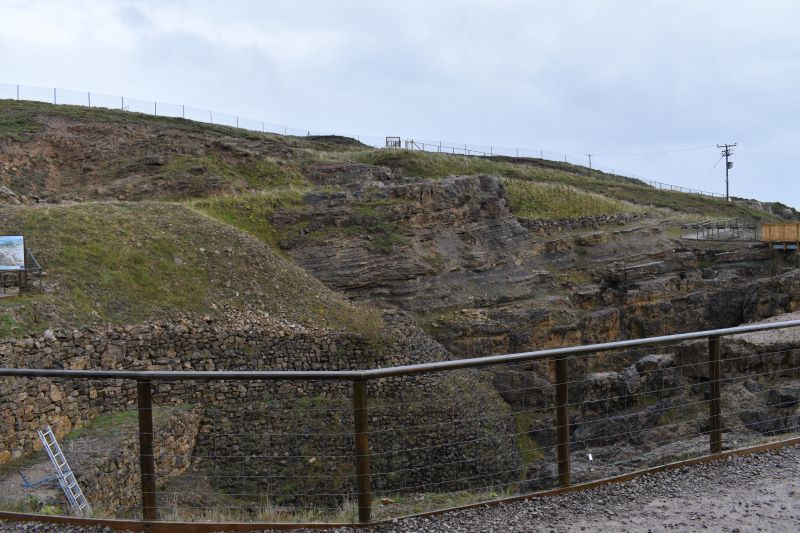
It’s pretty exciting to think this site has only been excavated more a little more than 30 years.
Research at the site is ongoing and it will be neat to see what can be uncovered as the work continues.
Post Sources:
[bg_collapse view=”link” color=”#4a4949″ icon=”arrow” expand_text=”Show More” collapse_text=”Show Less” ]
Great Orme Bronze Age Copper Mine website. Accessed 18 July 2021.
Historic UK website. Accessed 18 July 2021.
Malachite. www.geology.com. Accessed 18 July 2021
Lumen Learning courses: The Bronze Age. Accessed 18 July 2021.
[/bg_collapse]

